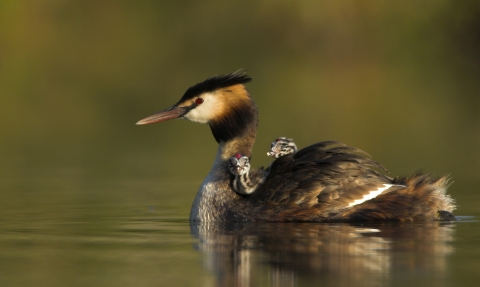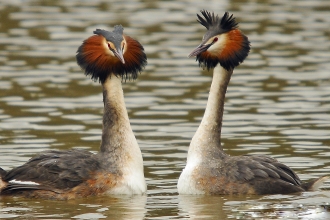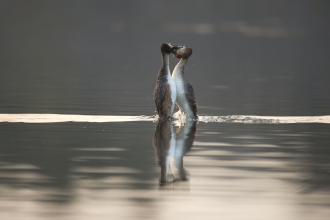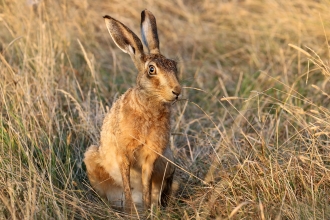
Grebes
Grebes
On early spring mornings, great crested grebe pairs join together to perform an elegant ritual. Head shaking, bill-dipping, and preening culminates in the famous ‘penguin dance’; the pair rush together, feet frantically paddling until they are upright, chest to chest, flicking beaks full of water weed at each other. A final head shake, the weed is dropped, and the deal is sealed. The plight of the great crested grebe was one of the triggers for the birth of the modern conservation movement. Laws and minds were changed, and 4,600 pairs of great crested grebes can be seen dancing on many park lakes, reservoirs, gravel pits, and canals.
Where can I see them?
Great crested grebes are widely distributed across lowland Britain. Find a gravel pit, lake or canal with a pair in residence and try your luck. To make things more comfortable, settle in to a bird hide at a wetland nature reserve. All you need is a pair of binoculars and a little patience… although a thermos of hot tea might be appreciated too.
In Lancashire, the two best spots to catch them are Mere Sands Wood and Wigan Flashes.
If you spot one, make sure to admire their head plumes (or ‘tippets’) that the great crested grebe was almost driven to extinction in Britain for (there were as few as 30 pairs left in the UK by the 1860s): The 19th century saw a fashion for bird plumes, used on hats and densely-feathered ‘grebe fur’ lined of fashionable capes and muffs. If you are lucky enough to see that final penguin dance, then come back in five weeks’ time and you should be able to see their humbug babies, riding on their parents’ back!
Did you know?
Grebes have complex courtship rituals, including dancing in pairs on the water.






